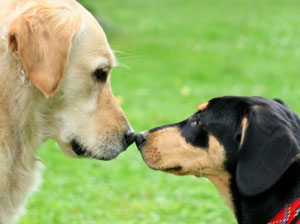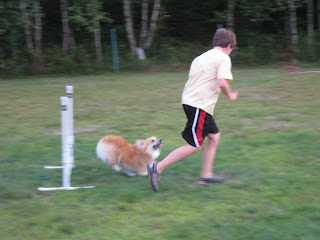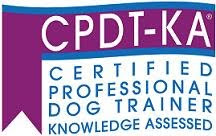 My dog, Felix. He creates new associations every day and I'd like to share them.
My dog, Felix. He creates new associations every day and I'd like to share them.My cat, Milo, jumps on the counter. I tell him (firmly) to get down. Felix doesn't like when I raise my voice so he goes to his safe place (under the living room table, by my feet). This repeats just a few times. Now, when Milo (much more silently) jumps on the counter, Felix goes under the table. Felix has decided that he doesn't like when Milo jumps on the counter because it causes me to raise my voice. Therefore, Milo on counter = Felix under the living room table. Guess what? The dog is now ratting out the cat! Yes, the cat still thinks he rules the roost
Example 2...
For whatever reason, if I open my oven for more than 5 seconds, our smoke alarm goes off. Felix, Mr Sensitivity is not a fan (who is?). So when it happens, he disappears into the dark office where he feels safe. This happens just a couple of times. Soon, when I open the oven, he disappears into the office. Tonight (though I covered the smoke detector and therefore wasn't paying much attention), I find him laying in the dark office by himself. He really would rather not come out until I'm done cooking.
 Example 3... A client's dog growls at their child and proceeds to be verbally corrected. Let's look backwards at this possible issue. Does the dog seem to like kids? Sure, in a general sense...when the child it sitting calmly, and even more so when the child is in her highchair, right? Those pieces of food falling from above really create a loving relationship from dog to child! How does the dog do with loud or sudden noises. "Oh, he jumps - definitely doesn't like them" Ok, so when the child is feeling rambunctious, when she is running around the house like the crazy little monkeys kids can be, tossing toys, fully energized. Is that when the dog growls? "Yes". How about when the child has a toy in her hand and approaches the dog? "Oh, definitely". Do you see the association??
Example 3... A client's dog growls at their child and proceeds to be verbally corrected. Let's look backwards at this possible issue. Does the dog seem to like kids? Sure, in a general sense...when the child it sitting calmly, and even more so when the child is in her highchair, right? Those pieces of food falling from above really create a loving relationship from dog to child! How does the dog do with loud or sudden noises. "Oh, he jumps - definitely doesn't like them" Ok, so when the child is feeling rambunctious, when she is running around the house like the crazy little monkeys kids can be, tossing toys, fully energized. Is that when the dog growls? "Yes". How about when the child has a toy in her hand and approaches the dog? "Oh, definitely". Do you see the association??
The dog has decided that in certain situations, kids can be pretty darn scary and unpredictable! And then to top it all off, the dog gets corrected for letting the child know he's uncomfortable with her! This is a separate issue altogether (please read "Thank your dog for growling")
Now let's approach another potential and very common example.
A dog has little experience with other dogs, so when on a walk - the dog does one of two things, pulls on leash to get to the dog (out of curiosity), maybe barks (out of frustration); or barks to make the other dog go away (since he is stuck on leash).
The dog owner decides he doesn't want the barking and lunging on leash (it's pretty embarrassing, after all) so he goes out and gets a tool to help, a pinch collar. Now, every time that curious dog sees another dog and barks out of frustration, he gets pinched. An aversive, punishment method. Soon, that curious dog associates the sight of other dogs with something very unpleasant. Depending on how sensitive and intelligent this dog is, he could very quickly change his association with seeing other dogs on leash, to something very negative. Before you know it, that curious dog becomes aggressive-reactive. Tries to make that dog go away. If off-leash, that dog may still hold on to that and have a negative association with the sight of other dogs. Or maybe your dog doesn't have good feelings about other dogs if the owner is around (because after all, the owner was always present when the negative feelings surfaced!)

Of course, I used a dog-dog example here but this could apply to dog-person, dog-child, dog-runner, etc etc
In conclusion...
#1 My dog Felix is very sensitive and Milo is a trouble maker!
#2 If you associate scary things with certain triggers (i.e. smoke alarm with opening the oven door; Cat on counter with yelling; pinch of the collar with the sight of a dog; loud noises with children), you dog will have negative feelings about those triggers. My guess is that THAT was not your intention. So try associating positive things with what your dog might be afraid of!


































